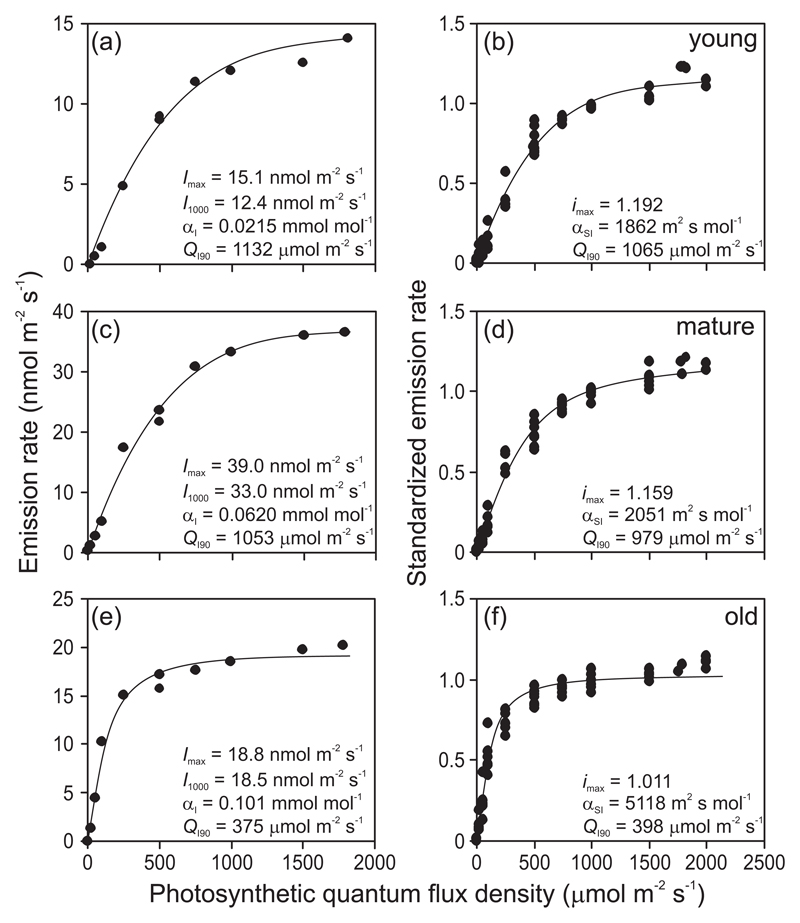Fig. 1.
Representative light (Q) dependencies of isoprene emission rate for young (a), mature (c) and old non-senescent (e) leaves and comparison of standardized light dependencies of isoprene emission among young (b), mature (d) and old non-senescent (f) leaves of hybrid aspen (Populus tremula x P. tremuloides). Data in (a), (c) and (e) were fitted by Eq. 2 (r2 = 0.989 for the young, r2 = 0.991 for the mature and r2 = 0.982 for the old leaf) with the parameters defined as: Imax - the isoprene emission capacity, αI - the initial quantum yield of isoprene emission. In addition, the predicted isoprene emission rate at Q = 1000 μmol m-2 s-1, I1000, and the value of Q that is necessary to achieve 90% of the process rate at the quantum flux density of 2000 μmol m-2 s-1, QI90, (Eq. 3, saturating quantum flux density) are also shown. In (b), (d), and (f) all data (6 light response curves for each leaf age class pooled) were standardized with respect to I1000 and Eq. 2 was fitted to the data again (r2 = 0.981 for young, r2 = 0.983 for mature and r2 = 0.968 for old leaves). Standardized response curve parameters are denoted as imax (apparent capacity) and αSI (apparent quantum yield). Young leaves (4th-5th from the apex) were ca. 12 days old, young fully mature leaves (10th-12th from the apex) were ca. 30 days old and old non-senescent fully mature leaves (18th-20th from the apex) were ca. 60 days old.

